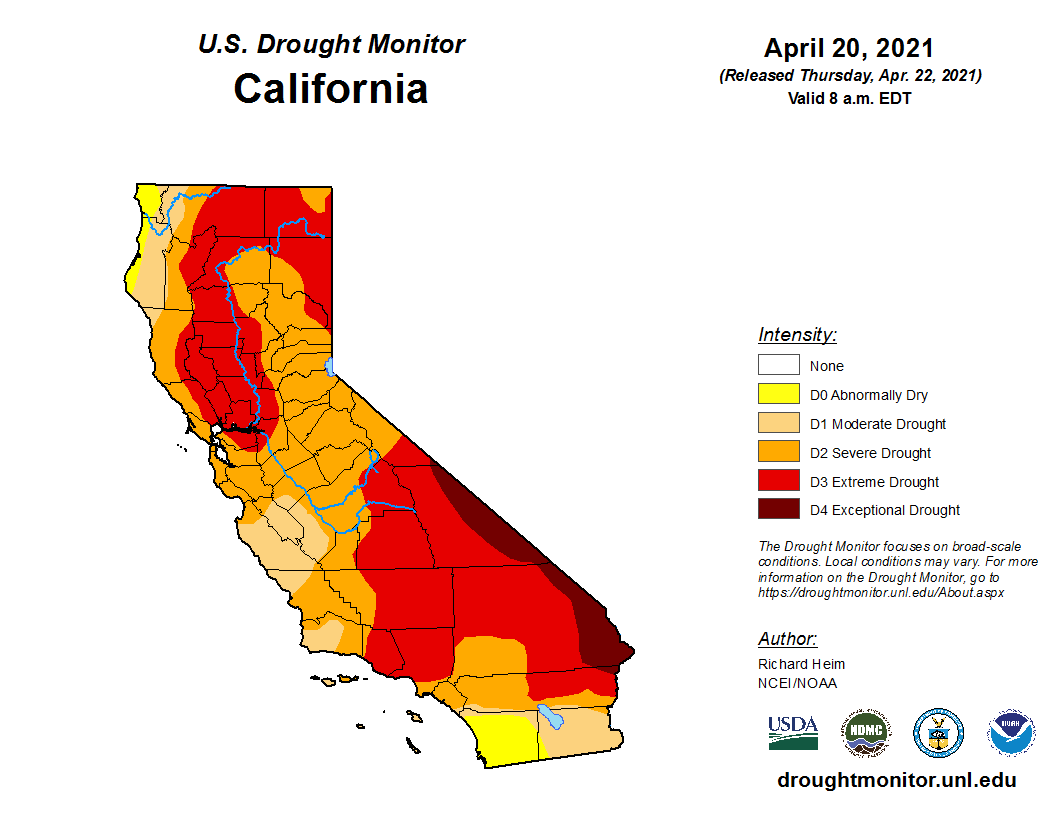This weekend’s rain in Northern California, while welcome, did little to address the dry conditions across our state. As the state’s recent dismal snow survey showed, we are in for tough times ahead. Less snow means lower reservoirs, less water in our rivers and streams, and more groundwater pumping. And that spells trouble, particularly for disadvantaged communities and sensitive ecosystems, which have historically borne the brunt of California drought in consequences like dry wells and salmon die-offs. Both are also starting 2021 in tough positions. Fish and wildlife populations have not rebounded since the last drought, and household water debt is piling up—with over $1 billion in unpaid water bills during the pandemic—indicating severe stress on households and water systems.
Last week, Governor Newsom took an important step by declaring drought in two counties of California. And tomorrow, April 29, the California Senate will be discussing an important drought relief funding package. Looking back at our state’s response to the last drought, we outline some opportunities for moving forward.
During the last drought, the state passed landmark legislation regulating groundwater use, mandated water efficiency, invested millions in public assistance for failed drinking water systems and fallowed farms, and even limited water diversions of some senior water rights holders (through a process known as “curtailments”). These policy advances are helping us to adapt to the reality of climate change, and we must double-down on effective implementation, including significant cross-agency collaboration, like that outlined in the Water Resilience Portfolio across CalEPA, the Natural Resources Agency, and the Department of Food and Agriculture.
Continued progress implementing the efficiency-focused “Water Conservation as A Way of Life” framework will be critical to discourage water waste. As Governor Newsom’s recent executive order points out, these measures have so far resulted in a 16% reduction in water use in our cities and towns.
Groundwater is the state’s most important water supply in times of drought. The Sustainable Groundwater Management Act (SGMA), passed in response to the last drought, recognizes this critical role, requiring groundwater basin planning that halts groundwater overdraft and brings basins into balance. That means reserving enough water in wet years to be used in dry years like this.
Unfortunately, the plans that have been submitted so far anticipate letting groundwater levels drop so low that they could dry out drinking water wells for as many as 127,000 people in the San Joaquin Valley alone, and most plans don’t address overdraft in a timely or comprehensive manner. In addition, many more wells have been drilled since the passage of SGMA. It is important to prioritize resources now to provide emergency water assistance to the individual family wells and small drinking water systems, along with groundwater dependent ecosystems, that will be even more vulnerable to falling groundwater levels during drought.
In the short term, emergency funding and authorities will be required to protect these vulnerable communities and ecosystems.
- Governor Newsom’s commitment to the human right to water means that local and state agencies must be directed to coordinate emergency response, including vital water supply equipment and resources ready to be deployed. Funding is desperately needed for this kind of immediate assistance, and to forgive mounting water debt.
- Sustaining California’s ecosystems through this moment of reduced water availability will necessitate reserving water in state and federal reservoirs to be used for maintaining cold temperatures in rivers and additional funding to purchase water from willing sellers to safeguard species teetering on the edge of extinction.
Over the longer-term, proactive drought planning at local and state scales could help prevent worsening impacts. The New Drought Resilient Communities Act— SB 552, authored by California State Senate Majority Leader Bob Hertzberg (D-Van Nuys)— will enhance drought resiliency in California’s most vulnerable communities and help prevent catastrophic water shortages by improving local planning, increasing data collection, updating emergency responses, and improving statewide coordination. In addition, the State Water Board could act now to develop clear and more detailed curtailment procedures that ensure enough flow in rivers to meet species needs, and could prioritize critical fixes to water systems and wells at risk of failure identified in the recent Safe and Affordable Drinking Water Fund Needs Assessment.
Drought is nothing new to California. We need leadership and investment to ensure that the impacts of this drought, and the ones to follow, do not disproportionately harm our most vulnerable populations and environments.
